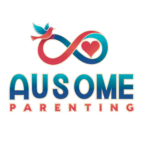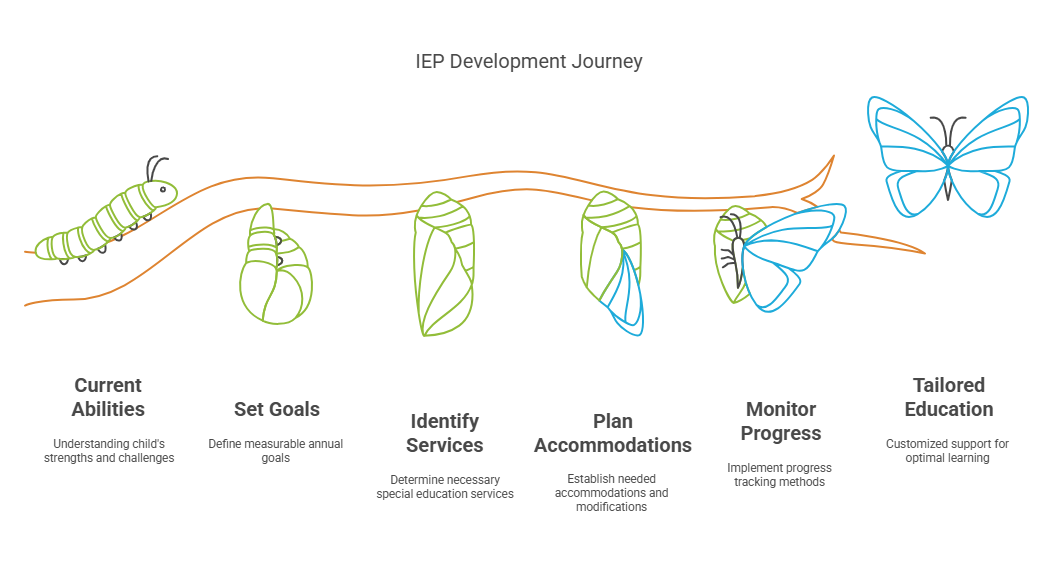Raising an autistic child is a journey filled with unique joys, challenges, and a deep desire to provide the best possible support. This guide aims to empower parents and caregivers by exploring the practical aspects of Individualized Education Programs (IEPs)

All About IEP: Individualized Education Program for Autistic Children
An Individualized Education Program (IEP) is a legal document that outlines a child’s unique educational needs, goals, and the specialized supports they’ll receive in school. It’s a powerful tool for ensuring autistic children get the best possible education tailored to their strengths and challenges.
Introduction to IEPs
- What is an IEP? An IEP is a personalized roadmap for your child’s education. It details their specific educational needs, sets measurable goals, and outlines the supports and services they’ll receive to achieve those goals.
- Mandate under IDEA: The Individuals with Disabilities Education Act (IDEA) is a federal law that guarantees a free and appropriate public education (FAPE) for all children with disabilities, including autism.
- Why IEPs are Important for Autistic Children: IEPs address the diverse needs of autistic children, ensuring they receive the accommodations, modifications, and specialized instruction they need to succeed academically, socially, and behaviorally.
Determining IEP Eligibility for Your Child
- The IEP Evaluation Process: To qualify for an IEP, your child must undergo an educational evaluation, typically conducted by a school psychologist. This assesses their cognitive abilities, academic skills, social-emotional functioning, and other areas. An autism diagnosis is essential for establishing eligibility.
- How to Request an IEP Evaluation: Parents have the right to request an evaluation at any time if they suspect their child has a disability. The school district must respond in a timely manner and provide the evaluation at no cost to the family.
- Understanding Independent IEP Evaluations: If you disagree with the school’s evaluation results, you have the right to seek an independent educational evaluation (IEE) at public expense.
Creating Your Child’s Individualized Education Plan
- The IEP Meeting: The IEP team, including parents, teachers, therapists, and other relevant professionals, meets to develop the IEP. This is your opportunity to share insights about your child and advocate for their needs.
- Preparation is Key: Before the meeting, gather information about your child’s strengths, challenges, preferences, and what works best for them. Come prepared with questions and specific goals you’d like addressed.
- Key Components of an IEP:
- Present Levels of Performance (PLP): A detailed description of your child’s current abilities, strengths, and challenges in various areas of development.
- Annual Goals: Measurable and achievable goals for the year, customized to address your child’s unique needs.
- Special Education Services: The specific supports and services your child will receive, such as speech therapy, occupational therapy, or social skills training.
- Accommodations and Modifications: Changes to the learning environment, materials, or expectations to support your child’s learning (e.g., extended time on tests, preferential seating, reduced homework).
- Progress Monitoring: Methods for tracking progress towards goals and making adjustments as needed.
- Important Note: Don’t be afraid to ask questions throughout the IEP meeting. Ensure you fully understand the document and agree with its contents before signing.

Implementing, Reviewing, and Tailoring the IEP
- Putting the IEP into Action: The IEP is a living document that guides your child’s education. Teachers and related service providers are responsible for implementing the accommodations, modifications, and services outlined within the IEP.
- Annual Review: The IEP team must meet at least annually to review your child’s progress, update goals, and make necessary adjustments to the plan.
- Ongoing Monitoring: Regular communication with your child’s teachers, including the special education teacher, is crucial for monitoring progress and identifying any challenges. If you feel your child needs additional support or adjustments, don’t hesitate to request an IEP meeting at any time.
- Tailoring the IEP for Success: As your child grows and changes, the IEP should be modified to reflect their evolving needs.
- Child’s Involvement: As your child gets older, encourage their participation in the IEP process. This fosters self-advocacy and ownership of their learning.
Transition Planning: Preparing Your Child for Adulthood
- Preparing for Adulthood: Beginning around age 14, the IEP for a child should focus on preparing your student with autism for life after high school, incorporating specific goals and objectives. This includes goals for independent living, employment, and further education.
- Transition Services: The school may provide transition services such as vocational training, job coaching, or support for college applications.
Helpful Resource:
- Institute on Community Integration – Provides information and resources on transition planning for youth with disabilities, including services and accommodations in the IEP goals.
Seeking Autism Support Resources
Raising an autistic child takes a village. Don’t hesitate to tap into the wealth of support available to you and your family:
- Support Groups: Connect with other parents of autistic children through local support groups or online communities. They offer a sense of belonging, shared experiences, and practical advice.
- Community Resources: Explore your community’s resources such as therapy centers, specialized programs, respite care providers, and recreational activities tailored to autistic individuals.
- Advocacy Organizations: National autism organizations provide information, resources, and advocacy support for individuals with autism. Examples include:
- Autism Speaks: https://www.autismspeaks.org/
- The National Autism Association: https://nationalautismassociation.org/
Advocating for Your Child’s Rights and Education
- Know Your Rights: Familiarize yourself with special education laws like IDEA and your child’s rights to appropriate education.
- Build Relationships: Develop positive relationships with your child’s teachers, therapists, and school administrators. Open communication is key to effective collaboration.
- Documentation is Crucial: Keep detailed records of your child’s progress, challenges, communication with the school, and any services they receive.
- Seek Outside Support: If needed, consider seeking the help of an educational advocate or lawyer specializing in special education.
For additional guidance, check out my book “Ausome Senses A Parent’s Guide to Navigating Sensory Processing in Autistic Children“. It includes a comprehensive chapter on autism advocating resources with real-life examples to help parents navigate the outside world and secure the support their child needs.
Promoting Independence and Growth in Autistic Children
A major goal for parents of autistic children is to empower them to live fulfilling and independent lives. Here are some ways to foster their growth:
- Focus on Strengths: Nurture your child’s interests and talents. Help them develop skills they excel in to build confidence.
- Encourage Self-Advocacy: Teach your child how to communicate their needs and ask for help when needed.
- Life Skills Training: Work on practical life skills like cooking, cleaning, personal hygiene, and managing money. Gradually increase independence based on their abilities.
- Community Involvement: Explore volunteer opportunities, social groups, or recreational activities that allow your child with autism to connect with others and build meaningful relationships.
Conclusion
Raising an autistic child is a journey filled with triumphs, challenges, and immeasurable love. Remember, you are your child’s most important advocate. By embracing mindful parenting strategies, understanding the IEP process, and accessing available support, you can empower your child to reach their full potential.
Every autistic child is unique, and their path will be shaped by their individual strengths and needs. Celebrate every milestone, learn from setbacks, and trust in your child’s inherent ability to grow and thrive.
A Message of Hope
While there may be difficult days, know that you are not alone. The autism community is strong and filled with families and professionals dedicated to supporting each other. Together, we can create a world where all autistic individuals are understood, accepted, and celebrated for their unique gifts and contributions.
If you found this information helpful, please consider sharing it with other families who might benefit from it.
I’d love to hear your thoughts. Do you have any feedback or additional topics you’d like to see covered in future blog posts?



